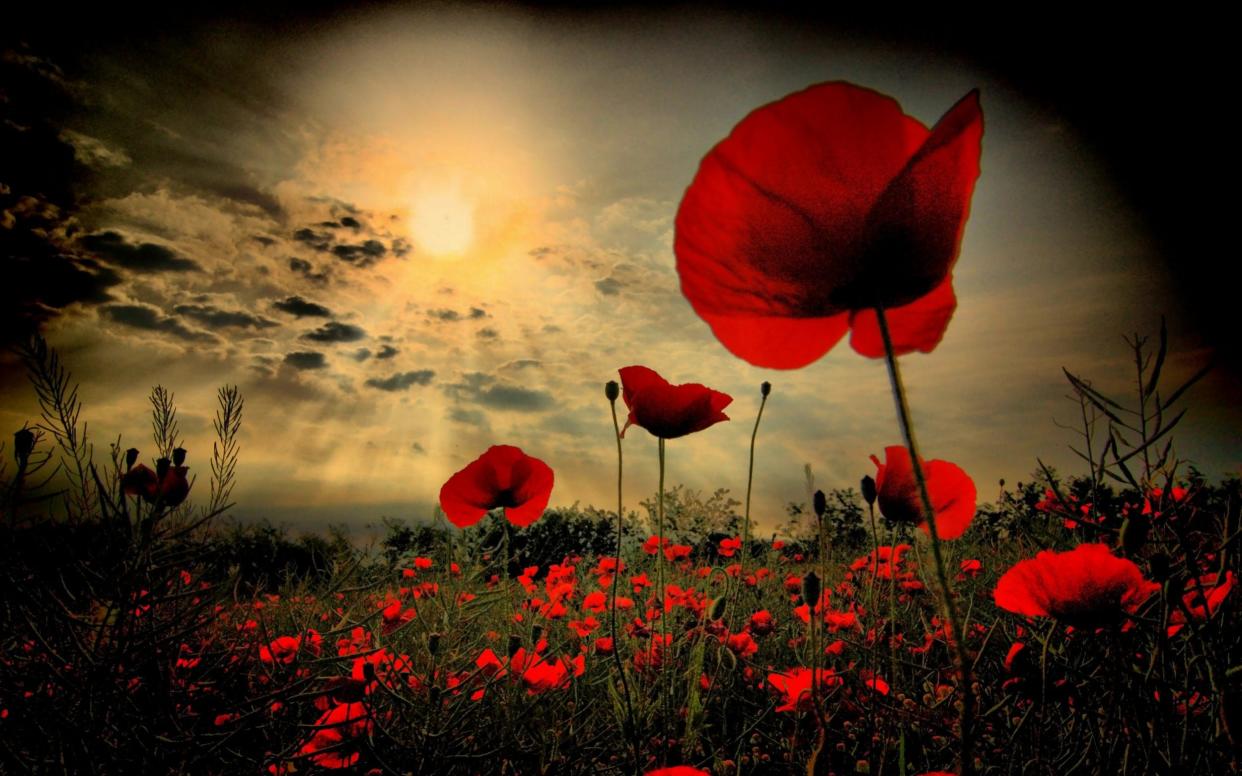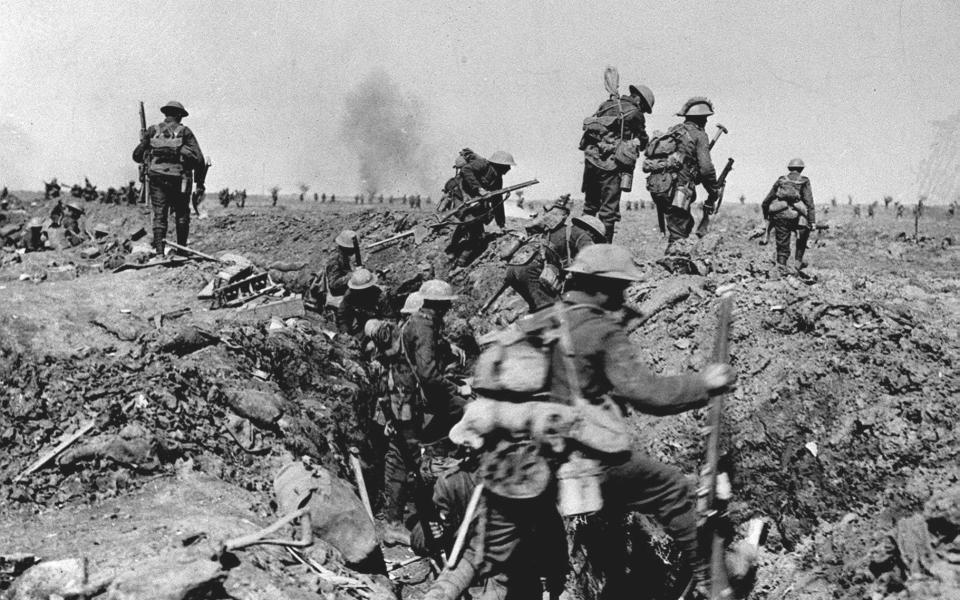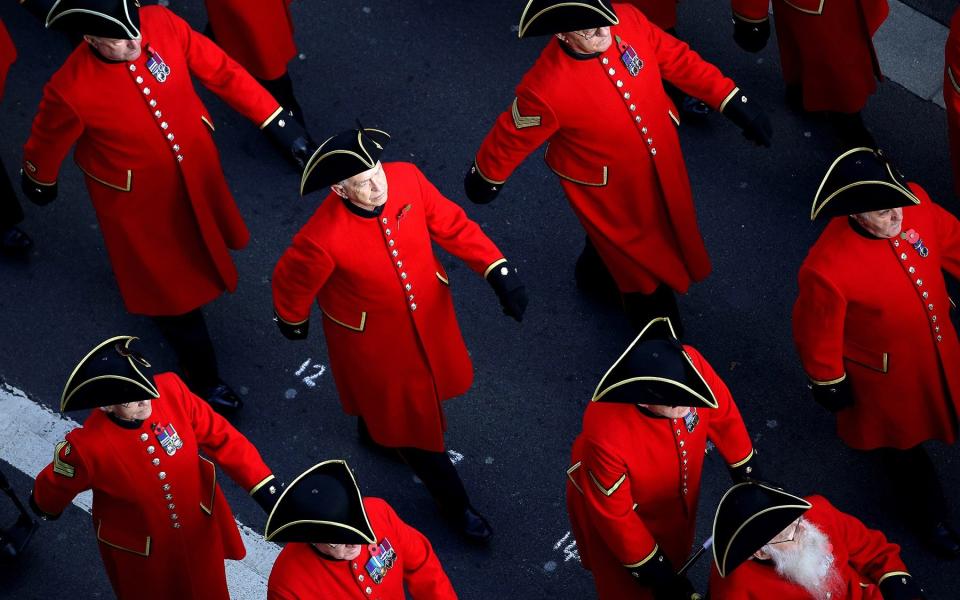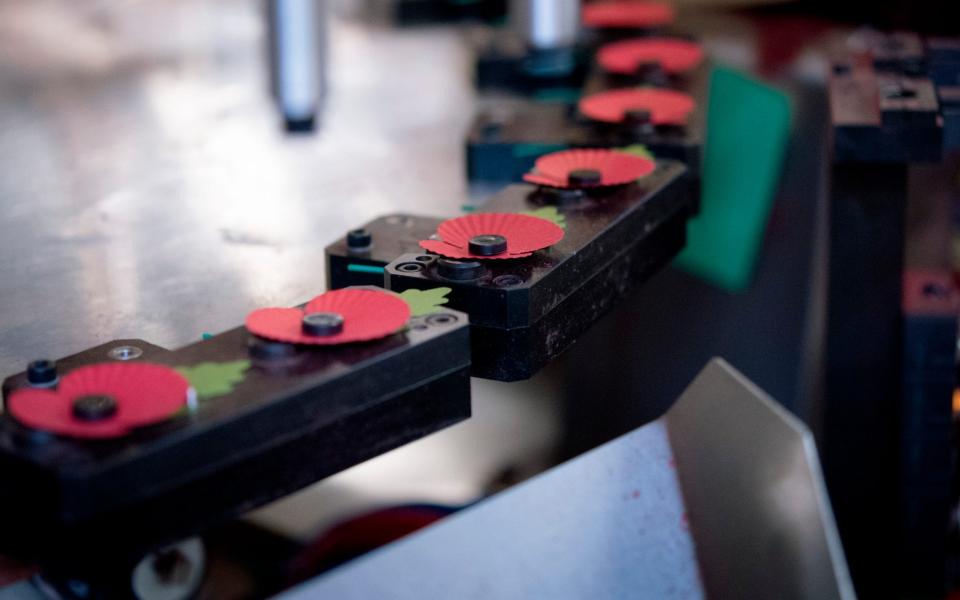Armistice Day 2020: Poppies, commemorations and why the act of remembrance matters

Commemorating the heroes of the First World War will have to take place remotely this November. The Remembrance Sunday March was cancelled and the National Service of Remembrance at the Cenotaph was not open to the public due to coronavirus restrictions.
In line with Covid-19 rules, the Royal British Legion are encouraging people to still take part in a moment of Remembrance by observing the Two Minute Silence at 11am from their doorstep on Wednesday.
November 11, 2020, Armistice day, marks 102 years since the end of the War. Every year the nation remembers the bravery of the men and women who fought it. But this time only limited communal singing outside is permitted, according to government guidance, and attendees must stay socially distanced at all times.
Here is everything you need to know about the date and the ways we can commemorate the fallen during the pandemic.
Origins of Armistice Day
Armistice Day commemorates the signing of the armistice between the Allies and Germany at 11am on 11 November 1918 - the eleventh hour of the eleventh day of the eleventh month.
Although hostilities continued in some areas, the armistice essentially brought an end to fours years of fighting in the First World War.
In Britain, it is tradition to pause for a two minute silence to remember those killed in the two world wars and the British servicemen killed or injured since 1945.
The armistice was signed in a railway carriage belonging to Ferdinand Foch, a French military commander, in the remote Forest of Compiègne, north of Paris, at 5am on 11 November 1918 and came into force at six hours later. (In 1940 Hitler forced the French to sign an armistice on German terms in the same railway carriage.)

The Treaty of Versailles, signed six months later, acted as the lasting peace treaty between the nations.
The armistice forced the Germans to evacuate invaded countries and territories within two weeks. They also had to surrender a significant amount of war material, including five thousand guns, 25,000 machine guns, 1,700 planes.
Germany, exhausted by war and with a nation of hungry citizens, reluctantly accepted the terms.
The main commemorative events
This year, Armistice Day, also known as Remembrance day, falls on a Wednesday 11 November. It is not to be confused with Remembrance Sunday which always falls on the second Sunday in November.
Each year, November 11 is also marked around the world. After the Second World War, many countries changed the name of the day from Armistice Day to Remembrance Day, while the US chose to call it Veterans Day and made the day a federal holiday.
The Festival of Remembrance, traditionally held at the Royal Albert Hall and attended by the Queen and her family, did not go ahead in its usual format due to the current Covid-19 restrictions and social distancing guidelines.
This year, the Royal British Legion, together with the BBC, created a pre-recorded programme that was broadcast on BBC One on Saturday November 7 and is available to watch on BBC iPlayer. Staff, volunteers and members of the public were unable to attend the filming of the event.
The National Service of Remembrance at the Cenotaph usually takes place on Remembrance Sunday. This year, only members of the Royal family, international leaders and armed forces veterans were allowed to attend the service.
In line with the latest Covid-19 rules, the annual Remembrance Sunday March Past the Cenotaph, which usually sees up to 10,000 people take part, was cancelled. Instead, the Royal British Legion encouraged people to mark the day at home by watching the service on TV and observing the the two minute silence at home or on their doorsteps.

The Government also released new guidance for local authorities, in line with the second lockdown, which began in England on November 5.
Local authorities, faith leaders and members of the Royal British Legion were permitted to organise outdoor events to safely mark November 8 at a public war memorial or cenotaph.
Lord West of Spithead, the former head of the navy, spoke out about against the ban on church services due to Covid-19. The retired admiral suggested the plans were putting veterans at ‘risk of pneumonia’, as they have no option but to pay tribute to their fallen comrades in the cold with with the risk of a £200 minimum fine for attending a church service under the lockdown restrictions.
Remembrance events should be short and focused on wreath-laying, while a march past or parade can take place if attendees are socially distanced.
Those legally permitted to attend events as participants include those attending as part of their work, such as local councillors and faith leaders, members of the armed forces and veterans.
While people are legally permitted to stop and watch as spectators, reasonable steps should be taken to "minimise wider public viewing", according to the guidance.
Members of the public are only permitted to attend the event with their own household or support bubble, or individually with one other person from outside their household.
Guidance states that limited communal singing - involving the national anthem and one additional song - is permitted outside, providing additional mitigations are put in place.
These include songs being a few minutes or less, keeping two metres between attendees and regular cleaning of surrounding surfaces that are touched.
Two minutes of silence
The first Remembrance Day in Britain and the Commonwealth was held in 1919. However, Australian journalist Edward George Honey is originally thought to have proposed the idea of a two-minute silence in a letter published in the London Evening News in May 1989.
King George V later issued a proclamation calling for a two minute silence, it said: "All locomotion should cease, so that, in perfect stillness, the thoughts of everyone may be concentrated on reverent remembrance of the glorious dead."
Why we wear poppies
In the spring of 1915, shortly after losing a friend in Ypres, Canadian doctor Lieutenant Colonel John McCrae was inspired by the sight of poppies growing in battle-scarred fields to write the now famous poem In Flanders Fields.
His poem moved American teacher Moina Michael who began making and selling silk poppies to friends to raise money for the ex-service community.
Before long, poppies made their way to the UK and became the symbol of the Royal British Legion when it was formed in 1921.
The first ever 'Poppy Appeal' in the UK that year raised over £106,000 for war veterans. The following year, a poppy factory was set up by Major George Howson MC, giving jobs to disabled former servicemen.
The bright red poppy is regarded as a resilient flower which managed to flourish despite fields being destroyed by war.
Some people say you should wear the poppy on your left side, so it is worn over the heart. The left is also where military medals are worn. Others say only the Queen and Royal Family are allowed to wear a poppy on the right, which is an urban myth.
A Royal British Legion spokesman said there is no right or wrong side, "other than to wear it with pride".
In Flanders Fields, a poem written by Canadian physician Lieutenant-Colonel John McCrae in 1915, is said to have inspired the enduring symbol of the war.
It describes the poppies that grew over the graves of the fallen soldiers; he is said to have written it after attending the funeral of his friend Lieutenant Alexis Helmer, who died in the Second Battle of Ypres.
In Flanders' fields the poppies blow
Between the crosses, row on row,
That mark our place: and in the sky
The larks, still bravely singing, fly
Scarce heard amid the guns below.
We are the dead. Short days ago
We lived, felt dawn, saw sunset glow,
Loved and were loved, and now we lie
In Flanders' fields.
Take up our quarrel with the foe;
To you from failing hands we throw
The torch; be yours to hold it high,
If ye break faith with us who die
We shall not sleep, though poppies grow
In Flanders' Fields.
Read more: Remembrance Day poems: 10 poems for the fallen
Buying a poppy in 2020
Poppies are available from late October when the Royal British Legion Poppy Appeal launches. Street collectors sell them all over Britain up until November 11.

Collectors aim to be at all major supermarket chains, train stations and high street stores. You can also buy poppies online from the Royal British Legion's website. The suggested donation is £1 per poppy.
This year, the Poppy Appeal has had to adapt to the threat of Covid-19, as many of the poppy collectors are unable to carry out face to face collections.
From displaying a poppy in your window to donating online or posting a poppy to your neighbour, the Royal British Legion is encouraging members of the public to support the appeal in new ways, while following the Covid-19 rules.
The net income from the appeal goes to the Royal British Legion Benevolent Fund and armed forces' dependents, veterans and those bereaved.
The poppies are made at the Poppy Factory in Richmond, Surrey, and in 2019, more than 40 million poppies were distributed by 40,000 volunteers.
Read more: Savers can support veterans and earn interest with new 'poppy accounts'

